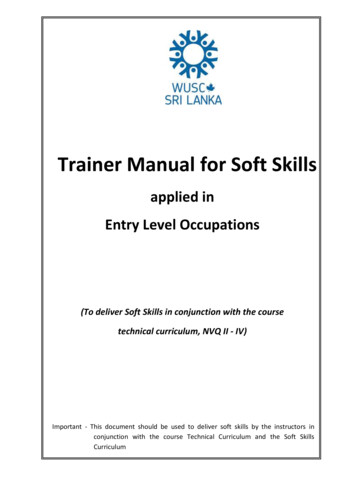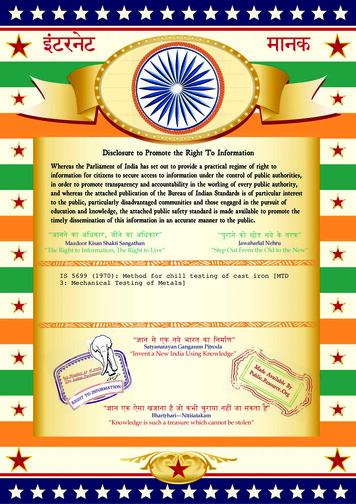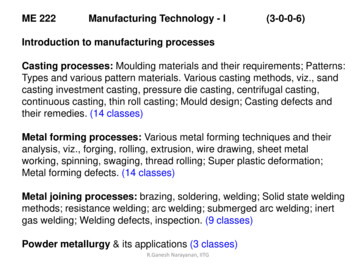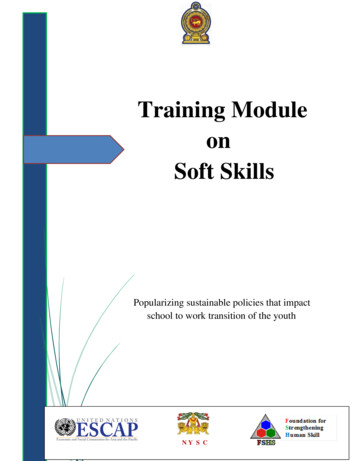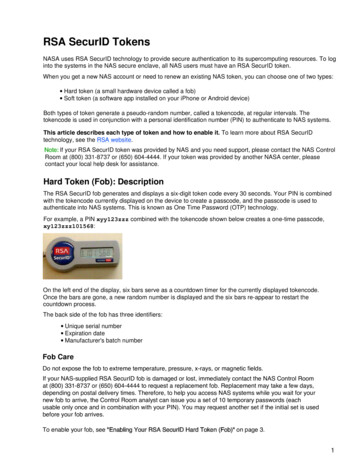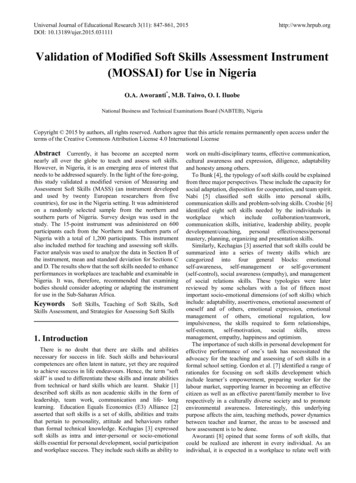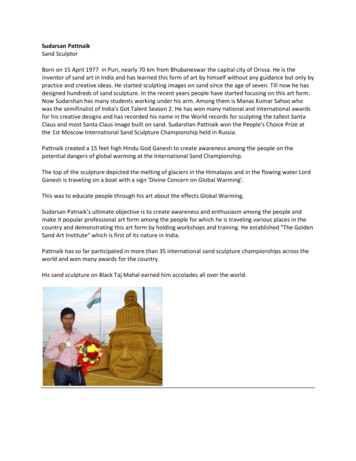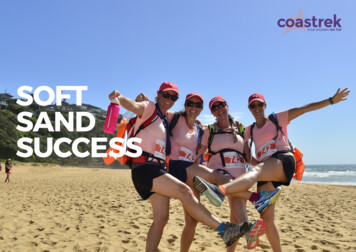
Transcription
SOFTSANDSUCCESS
4. SOFT SAND SUCCESSCOASTREK PLAN & TRAIN E-BOOKBY WILD WOMEN ON TOP2
WHY SO MUCH SAND?We love the ‘S’ words! Seek softthe sand is, how much you weigh, howsurfaces to stay sexy, slinky and safe!heavy your pack is and the slope of thebeach, but you get the picture. It’s soThe Wild Women On Top Coastrek isgood for you!a celebration of stunning coastlinesand an opportunity for you to get fitIn training, you want to get fitter, so aimwhile trekking. So of course the eventto get your heart rate up on the softincludes delicious, soft, sinky, warm,sand and really give yourself a workout.moist, moving, golden sand; and lotsPush hard.of it!During the event, however, you want toTo make this fun, practice theconserve energy to finish the event, sotechnique of planting your toe first intorelax your pace on the soft sand duringthe sand, like swimming freestyle withthe event to ensure success.your feet. Surf lifesavers are brilliant atthis so check them out (their feet, notSoft sand training strengthens yourtheir budgie smugglers).core muscles (your abs, bum and back),because your body has to work to stayThis is great news to get YOU fitter andstable as the sand moves underneathstronger and/or burn calories and fat.you. It’s easier on your joints becauseWalking on soft sand increases caloricit’s low impact and less jarring, allowingexpenditure up to 100% if you can keepthe body to move in a greater range ofup the pace. So, walking 3-4km an hourmotion. It’s fantastic for strengtheningin soft sand is equivalent to walkingankles after they’ve been sprained.about 6-7km an hour on flat pavement.This depends on your speed, how soft3
TIPS FOR SUCCESSFULSOFT SAND WALKINGGet your technique right: Focustrail runners. A good pair of trailfeet. You can add five minutes at a timeon tipping your weight slightly morerunners will keep your feet ventilated,as you get used to the new surface.forward, pointing your toes like asupported and protected. However, onBuild up gradually, starting with shortballerina and pushing your toes intolong stretches of soft sand, walking indistances and working up to longerthe sand first. This will make your feetbare feet is great for strengthening thedistance once or twice a week.act like paddles, pushing the sandfeet and ankles during training as wellPace yourself: Keep a brisk pace, butbackwards and propelling you forward.as injury prevention during the event.listen to your body. Remember thatIf you go heel first, you’ll go nowhere.Make sure you’re balenced: Avoidyou’re burning extra calories just bySoft sand will give your calf muscles asloping sand, but if that’s impossible,walking on soft sand so use intervalgreater stretch and therefore a greaterspend half your time walking in onetraining principles and avoid injury.workout, so take care if you havedirection, then turn around and walkProtect yourself: Always wearAchilles tendon issues.in the other direction to avoid over-sunscreen, a hat, a light white cottonWarm-up/Cool-down: A five minutestraining one leg.shirt to cover your skin in the sun, a wetwarm-up for walking and cool downDon’t overdo the soft sand training:bandana to keep your neck cool andafterwards is recommended forSoft sand walking is high intensity soensure you’re well hydrated. And don’tpreventing strains and sprains.don’t overdo it. Limit your first barefootforget your ankle cuffs to keep the sandGet the right footwear: Duringwalk to just 20 minutes to buildfrom flicking in the top of your shoes.Coastrek, we recommend you wearstrength in your lower legs, ankles, andGet pole power: Push off your polesfor a great triceps and upper bodyworkout. Don’t forget to clean yourpoles after use to avoid salt and sanddamage.Risks: If you’re overweight,deconditioned, recovering from injury,going too fast or walking on slopingsand your risk of injury is increased.Please seek professional advice.Soft sand training is a winner forfitness, time efficiency, strength, coreand cardio, BUT make sure you usegood technique. During the event,adapt your pace so that you achieveyour Coastrek goal of finishing thedistance injury free!4
ballerina and pushing your toes into the sand first. This will make your feet act like paddles, pushing the sand backwards and propelling you forward. If you go heel first, you’ll go nowhere. Soft sand will give your calf muscles a greater stretch and therefore a greater workout
